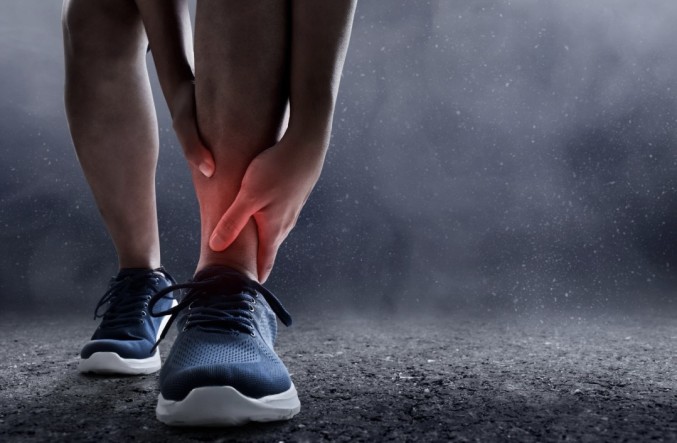The Centers for Advanced Orthopaedics is redefining the way musculoskeletal care is delivered across the region with locations throughout Maryland, DC, Virginia and Pennsylvania.
Ankle Sprains and Instability
What is ankle instability?
The acute ankle sprain is the most common injury in both interscholastic and intercollegiate sports. Lateral (outside) ankle sprains are much more common than medial (inside) sprains, typically involving the anterior talofibular ligament. Simple ankle sprains are not as innocuous as many believe, with high rates of prolonged symptoms, decreased physical activity, recurrent injury, and self-reported disability. The hallmarks of chronic ankle instability include repeated ankle sprains that lead to an altered patient activity level.

What can be done to treat ankle instability without surgery?
Routine non-operative treatment is successful in more than 90% of individuals. After a painful injury, an ankle brace or boot should be worn based on severity. Quickly weaning to walking in a brace is appropriate, helping pain and preventing recurrence. Adequate rehabilitation with a focus to correct proprioceptive, strength, and motion deficits can provide sufficient reduction in symptoms to avoid surgical intervention.
If nonsurgical treatment fails, what can be expected with surgery?
Surgery is reserved for those who fail bracing, proprioceptive training, and kinetic chain or weight bearing strengthening. The goals of surgery are to restore the normal stability of the ankle and minimize symptoms. Depending on the characteristics of the instability, surgery commonly repairs the torn ligaments or less commonly reconstructs them with a graft. Associated injuries to the ankle and surrounding tendons are common and these would be treated concurrently.
What happens after surgery and how long will this affect walking and other activities?
Ankle instability surgery is outpatient surgery. After surgery, the patient is in a splint until seen in the office 10-14 days later. The splint is removed, and a boot is applied. This is used as a cast until 6 weeks after surgery, and weight bearing is typically allowed in the boot after 4 weeks. Physical Therapy is implemented within the first 4 - 6 weeks and includes ROM, stretching, strengthening, balance and proprioceptive training, gait training and returning to the pre-injury activity level. Persistent swelling and stiffness may slow progress, but recovery usually occurs over the first 3 - 6 months.